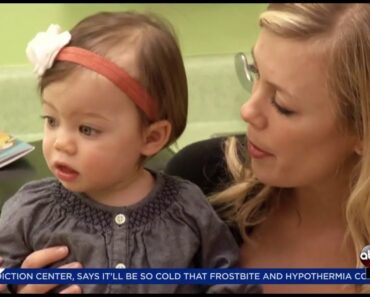Image: Shutterstock
Breasts of all shapes and sizes work well for breastfeeding. Apart from the normal challenges of breastfeeding, women with heavy breasts might also face some other challenges related to position and latching. Women with large breasts can easily have a successful breastfeeding journey by following a few tips and tricks.
If you are a woman with large breasts and are worried about the challenges you might face with your breastfeeding journey, this post will help you find answers to your queries.
What Are The Challenges Of Breastfeeding With Big Breasts?
Mothers with big breasts may face some or all of the following issues while breastfeeding with large breasts (1).
- Mothers may be worried about their baby getting trapped or suffocated under their large breasts. They might also fear that the baby’s nose might get pinched under the large breasts. However, maintaining a proper breastfeeding position and a good hold can help you overcome this problem.
- Due to the more weight of larger breasts, they hang lower, and hence it might make a mother bend forward and give the nipple in the baby’s mouth. It leads to poor back and neck posture, leading to back and neck pain.
- A good latch requires a baby to take the entire areola along with the nipple in the mouth. In women with larger breasts, the areola is also large, and as a result, the baby may not be able to take the entire areola in the mouth. It can cause incorrect latch and associated issues in babies and mothers.
- Mothers may develop rashes under their breasts due to the larger size of the breasts.
- The mother may not be able to see the baby quite well due to obstruction by large breasts. They might worry about the position of the nipple in the baby’s mouth or whether the baby is latched to the breast correctly.
- Apart from these, they may also face the other issues that all lactating mothers face, such as engorgement, cracked and sore nipples, clogged milk ducts, mastitis, and thrush. You may read more about common breastfeeding problems here.
Does Having Larger Breasts Mean A Higher Milk Supply?
A woman’s breasts are made of fatty tissue, glandular tissue, and connective tissue. The glandular tissue in the breast is responsible for milk production. Larger breasts mean more fatty tissue in the breasts. Therefore, the size of a woman’s breast does not have any impact on milk production (2). Research also states that overweight or obese mothers, who usually may have larger breasts, may produce lesser milk due to unhealthy body weight (3).
Easier Breastfeeding Positions For Women With Larger Breasts
While the best breastfeeding position is the one that the mother finds the best, the following breastfeeding positions are found more comfortable by women with larger breasts (4)
(5).
1. Rugby or football hold
- It is also called side-sitting hold or clutch hold. The baby’s head is placed close to the side of the breast from which the baby will feed.
- The mother tucks the baby’s body against her side and under her arm.
- The mother’s forearm will support the baby’s upper back, and her hand and fingers will support the baby’s shoulder, neck, and head.
- The baby’s legs will stretch out straight behind you.
- If the mother is on a chair. The baby’s bottom can be rested against the back of the chair, and the legs can be angled straight up.
- The mother may keep a pillow under the elbow for support. The pillow can also keep the baby’s head at the same level as the mother’s breast.
- It is beneficial for a mother with larger breasts because she can see both her nipple and the baby’s mouth.
2. Side-lying position
- The mother lies on the side with pillows behind her back and under her head.
- The mother should keep her back and hips in a straight line.
- The baby should be kept in a straight parallel line to the mother’s body in a way that the baby’s mouth faces the mother’s nipple.
- The mother’s arm should be around the baby.
- The other hand may be used to support the breast to aid in a better latch.
- This position is helpful as the mattress supports the weight of the mother’s breast.
- The mother can feed the baby from both sides without changing sides by elevating the baby with a pillow.
- Some mothers also use a table to mimic the side-lying position while sitting. The table will take the weight of both the mother and the baby.
3. Laidback breastfeeding
- The mother sits in a semi-reclined position on a chair. The mother may use a small pillow under the lower back for better support.
- In this position, the entire weight of the baby’s body is taken by the mother’s body as the baby lies on top of the mother’s stomach.
- The baby and the mother are in skin-to-skin contact all the time.
- The benefit of this position is that the breast tissue flattens a little when the mother is in a semi-reclined position, keeping the breast tissue away from the baby’s nose.
- In this position, the weight of the breasts is away from the baby’s body.
- This position is also known as the Australian or the down-under position.
4. Cradle hold
- This is the traditional breastfeeding position.
- The mother supports the baby on the arm that is on the same side as that of the breast that is being used.
- The baby’s head rests in the inner surface of the mother’s elbow, the mother’s forearm supports the baby’s back, and the palm is used to hold the baby’s buttocks or upper thighs.
- You can use the other hand to support the breast or the nipple.
- In this position, the lap or tummy will take the weight of the mother’s breasts.
Tips For Breastfeeding With Large Breasts
The following tips could help you make your breastfeeding journey smoother (2).
- A little knowledge about breastfeeding positions and techniques can help you embark on a smooth breastfeeding journey sooner. If you are a first-time mother, having a little information in advance can help you and your baby. Consult your obstetrician, midwife, or lactation consultant to guide you about breastfeeding.
- Larger breasts filled with milk may get too heavy, and a well-supportive nursing bra might help prevent back and neck pain.
- You may use a feeding pillow to prop the baby up so that you can see where and how they latch.
- You may use a rolled-up cloth nappy or a bunny rug under the breast to prop the breast up. It will help you view the baby’s mouth properly and also keep your breast from falling onto the baby’s nose.
- You can use the C-hold to grasp your breast while you are latching the baby on. It makes latching easier for the baby. The following are the steps to achieve the C-hold.
- Place your breast in the palm of your hand.
- Put your thumb on the top of your breast and use your fingers to cup your breast.
- The hand should look like the letter “C.”
- Keep your thumb and fingers around the areola so that the entire areola is available for the baby to latch on.
- The C-hold will help you direct the nipple and areola well into the baby’s mouth.
- You may choose to breastfeed your baby in front of a mirror. It will help you view your and your baby’s position well and keep an eye on the baby’s latch.
- Keep the baby’s chin well attached to the breast. It will keep the nose clear from the breast tissue.
- Always keep the baby and your breast at the same level.
- If your breasts are full and engorged, it might be more difficult to feed the baby. Hand-express or pump excess milk to relieve the engorgement. Latching will be easier for babies if the breasts are softer.
- Monitor your baby’s weight regularly to check if they are feeding and growing well and that they are not gaining weight too quickly.
- Due to sweat and leakage of breast milk, rashes might develop under the breasts. The dampness may be a breeding ground for yeast and dermatitis. Keep the area clean, dry, and expose it to air for as long as you can.
Can I Breastfeed If I Had A Breast Cosmetic Surgery?
Most women can breastfeed even if they had a breast reduction or a breast augmentation surgery in the past. During breast augmentation surgery, breast implants are placed between the chest wall and the breast. It does not impact or interfere with the functions of the breast ducts. In breast reduction, a part of the glandular tissue is removed, but, in most cases, there is enough tissue left to produce breast milk.
In a few women, the breast milk supply might be hampered due to surgical incisions or damage to the nerves of the breast during the procedure. Your surgeon, gynecologist, or lactation consultant can help you with breastfeeding after breast surgery and suggest relevant interventions (6).
Breastfeeding for women with large breasts is possible, and the size of the breasts does not affect milk production or any aspect of breastfeeding. Adopting a comfortable position and keeping some tips handy may help you ease up your breastfeeding journey. Do not hesitate to visit a lactation consultant to get guidance on how to breastfeed with large breasts.


































